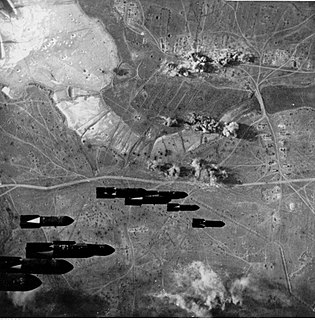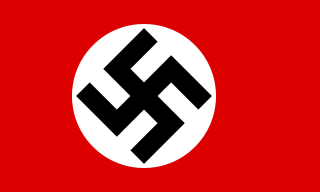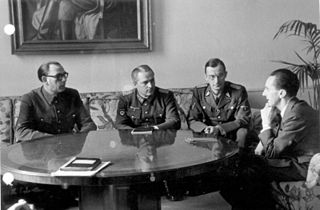 W
WThe Defense of the Adzhimushkay Quarry took part during World War II, between May and October 1942, in the Adzhimushkay quarry named after the Adzhimushkay suburb of Kerch during Nazi Germany's occupation of Crimea.
 W
WThe Battle of the Kerch Peninsula, which commenced with the Soviet Kerch-Feodosia Landing Operation and ended with the German Operation Bustard Hunt, was a World War II battle between Erich von Manstein's German and Romanian 11th Army and the Soviet Crimean Front forces in the Kerch Peninsula, in the eastern part of the Crimean Peninsula. It began on 26 December 1941 with an amphibious landing operation by two Soviet armies intended to break the Siege of Sevastopol. Axis forces first contained the Soviet beachhead throughout the winter and interdicted its naval supply lines through aerial bombing. From January through April, the Crimean Front launched repeated offensives against the 11th Army, all of which failed with heavy losses. The Red Army lost 352,000 men in the attacks, while the Axis suffered 24,120 casualties. Superior German artillery firepower was largely responsible for the Soviet debacle.
 W
WThe Crimea campaign was an eight-month-long campaign by Axis forces to conquer the Crimea Peninsula, and was the scene of some of the bloodiest battles on the Eastern Front during World War II. The German, Romanian, and defending Soviet troops suffered heavy casualties as the Axis forces tried to advance through the Isthmus of Perekop linking the Crimean peninsula to the mainland at Perekop, from summer of 1941 through to the first half of 1942.
 W
WThe Crimean offensive, known in German sources as the Battle of the Crimea, was a series of offensives by the Red Army directed at the German-held Crimea. The Red Army's 4th Ukrainian Front engaged the German 17th Army of Army Group A, which consisted of Wehrmacht and Romanian formations. The battles ended with the evacuation of the Crimea by the Germans. German and Romanian forces suffered considerable losses during the evacuation.
 W
WThe deportation of the Crimean Tatars or the Sürgünlik ("exile") was the ethnic cleansing and cultural genocide of at least 191,044 Crimean Tatars in 18–20 May 1944 carried out by the Soviet government, ordered by Lavrentiy Beria, head of the Soviet state security and secret police, acting on behalf of Joseph Stalin. Within three days, the NKVD used cattle trains to deport mostly women, children, the elderly, even Communists and members of the Red Army, to mostly the Uzbek SSR, several thousand kilometres away. They were one of the several ethnicities who were encompassed by Stalin's policy of population transfer in the Soviet Union.
 W
WMount Sapun or Sapun Ridge is a 240 m high ridge to the southeast of Sevastopol, situated on the disputed Crimean peninsula.
 W
WThe siege of Sevastopol also known as the defence of Sevastopol or the Battle of Sevastopol was a military engagement that took place on the Eastern Front of the Second World War. The campaign was fought by the Axis powers of Germany and Romania against the Soviet Union for control of Sevastopol, a port in the Crimea on the Black Sea. On 22 June 1941 the Axis invaded the Soviet Union during Operation Barbarossa. Axis land forces reached the Crimea in the autumn of 1941 and overran most of the area. The only objective not in Axis hands was Sevastopol. Several attempts were made to secure the city in October and November 1941. A major attack was planned for late November, but heavy rains delayed it until 17 December 1941. Under the command of Erich von Manstein, Axis forces were unable to capture Sevastopol during this first operation. Soviet forces launched an amphibious landing on the Crimean peninsula at Kerch in December 1941 to relieve the siege and force the Axis to divert forces to defend their gains. The operation saved Sevastopol for the time being, but the bridgehead in the eastern Crimea was eliminated in May 1942.
 W
WDuring World War II, Reichskommissariat Ukraine was the civilian occupation regime (Reichskommissariat) of much of Nazi German-occupied Ukraine. It was governed by the Reich Ministry for the Occupied Eastern Territories headed by Alfred Rosenberg. Between September 1941 and August 1944, the Reichskommissariat was administered by Erich Koch as the Reichskommissar. The administration's tasks included the pacification of the region and the exploitation, for German benefit, of its resources and people. Adolf Hitler issued a Führer Decree defining the administration of the newly occupied Eastern territories on 17 July 1941.
 W
WAmong the approximately one million foreign volunteers and conscripts who served in the Wehrmacht and Waffen SS during World War II were ethnic Germans, Belgians, Czechs, Dutch, Finns, Danes, French, Hungarians, Norwegians, Poles, Portuguese, Swedes, and British, along with people from the Baltic states and the Balkans. At least 47,000 Spaniards served in the Blue Division.
 W
WThe Yalta Conference, also known as the Crimea Conference and codenamed Argonaut, held February 4–11, 1945, was the World War II meeting of the heads of government of the United States, the United Kingdom, and the Soviet Union to discuss the postwar reorganization of Germany and Europe. The three states were represented by President Franklin D. Roosevelt, Prime Minister Winston Churchill, and Premier Joseph Stalin, respectively. The conference was held near Yalta in Crimea, Soviet Union, within the Livadia, Yusupov, and Vorontsov Palaces.